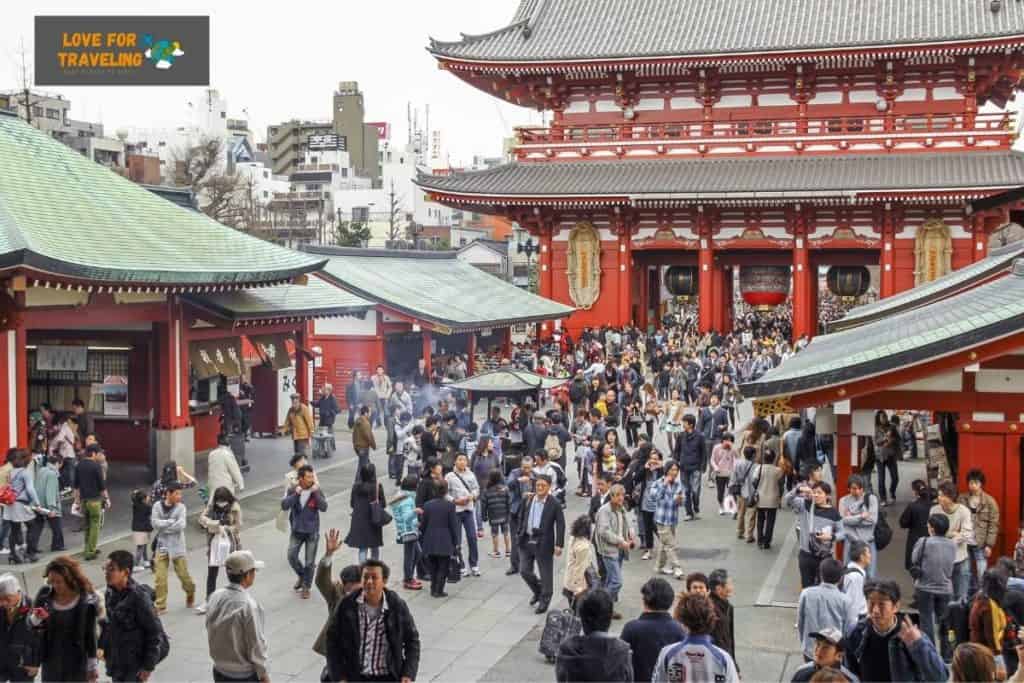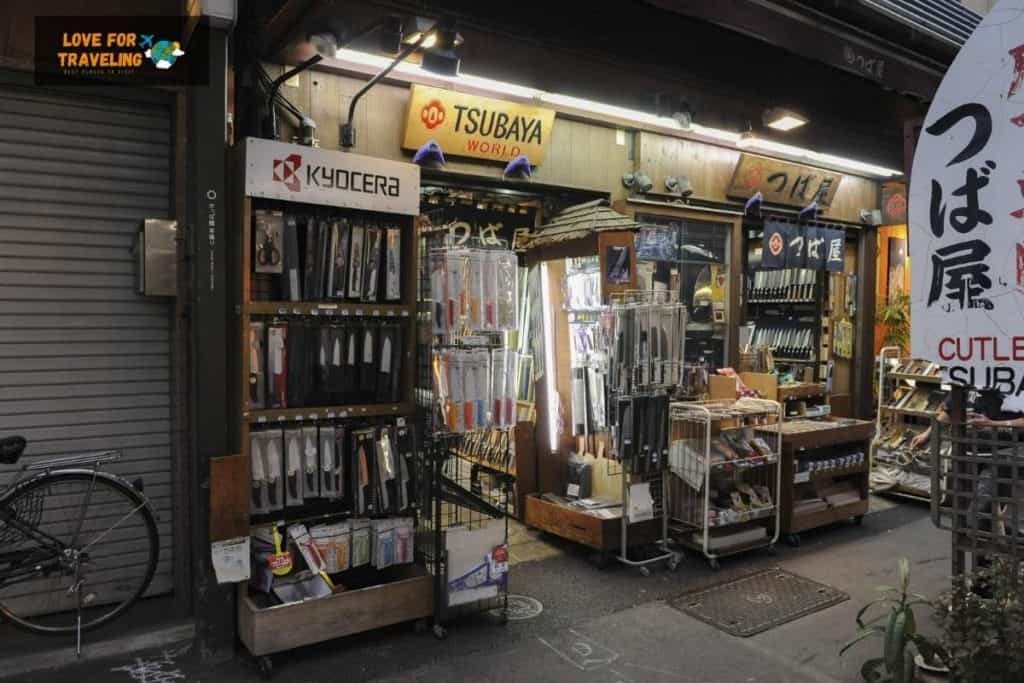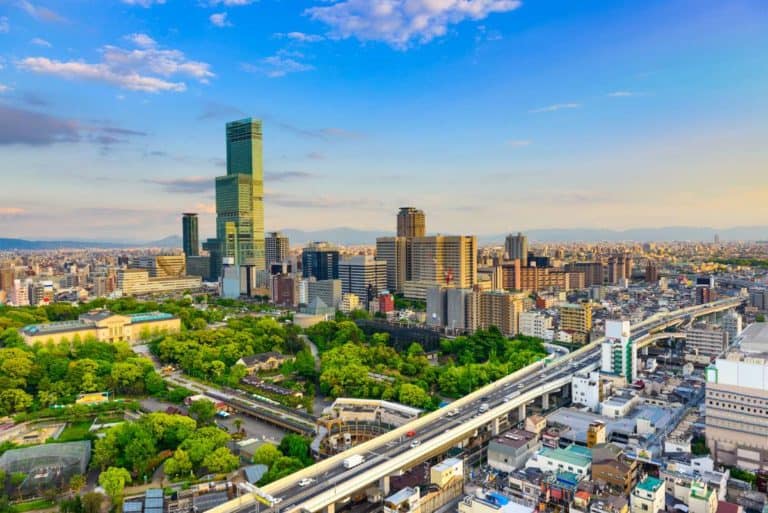What to Do in Asakusa? 20 Activities That You Will Love!
Asakusa is a neighborhood in Tokyo known for its old-fashioned shops and temples. Senso-Ji is one of the most popular tourist attractions in Asakusa, a Buddhist temple dating back to the seventh century.
Open to the public; anyone who wishes to learn about Japanese temples can visit the temple grounds. They may purchase souvenirs at local stores and eat traditional Japanese cuisines such as grilled skewered meat and rice balls.
Taking a cruise down the Sumida River is another popular pastime in Asakusa.
These cruises offer views of the Tokyo skyline, and many boats are decorated with lanterns lit at night. Whether you’re interested in history or culture, there’s something for everyone in Asakusa.
As an Amazon Associate and Booking affiliate, LoveForTraveling.com earns from qualifying purchases. We may receive a commission for purchases made via our links.
Here are 20 things to do in Asakusa:
1) Visit Sensoji Temple

Senso-Ji, a Buddhist temple constructed in the 7th century, is one of Japan’s most famous temples.
According to legend, the temple’s founding began when two fishermen brothers, Hinokuma Hamanari and Hinokuma Takenari, discovered a statue of Kannon, the Buddhist goddess of mercy, in the Sumida River. They found it bobbing up and down in the river with the fishing net.
The statue was brought to their village chief, Hajino Nakamoto, who recognized its sacredness and converted his home into a tiny temple to safeguard it.
Over time, the temple grew and became one of Tokyo’s most popular tourist destinations. Today, visitors can admire the temple’s beautiful architecture and learn about its history. They can also participate in traditional Japanese ceremonies.
2) Asakusa: Kimono Makeover with Photoshoot Tour
On this photoshoot tour, you’ll explore the area wearing a beautiful kimono or hakama. You’ll start at Sensoji, a Buddhist temple surrounded by picturesque gardens.
Your guide will lead you to more than four locations around Asakusa, such as the nearby Sumida River and Kaminarimon Gate.
At each stop, you can have your photos taken by a local professional guide.
You’ll receive more than 20 edited photos you can take home. Whether you’re a history buff or enjoy exploring new places, this tour will highlight your trip to Tokyo.
3) Be amazed by Cherry blossoms in Sumida Park.

Sumida Park is a great place to enjoy the cherry blossoms, with around 450 trees blooming in the spring. The park is close to Asakusa Station and offers stunning views of Tokyo Skytree.
During the cherry blossom festival season, the park is crowded with picnickers and photographers, but it’s still possible to find a quiet spot to enjoy the flowers.
The waterbus is a great way to see the cherry blossoms from the river. The sight is even more beautiful at night when the trees are illuminated.
If you’re looking for a place to see Cherry blossoms in Tokyo, Sumida Park is worth visiting.
4) Visit the Tokyo Skytree
The Tokyo Skytree is a magnificent feat of engineering, and it’s no surprise that it has become one of Japan’s most popular tourist destinations.
Standing at a whopping 634 meters tall, it is the tallest structure in Japan and the second tallest globally. The view from the top is breathtaking, and on a clear day, you can see to Mount Fuji.
The shopping complex at the Tokyo Skytree is also worth visiting, as it’s home to an aquarium, numerous shops, and restaurants.
The first deck is 350 meters, while the second is 450 meters. Visitors can purchase tickets for either deck or both decks.
The journey to the top starts on the 4th floor, where tickets for the first observation deck are sold. A fast and smooth elevator ride takes visitors to the top and bottom of the first observation deck, where tickets for the second observation deck can be purchased.
Visitors then access the second deck before descending back to the lower floors of the first observatory, where they board the elevator down to the tower’s exit on the 5th floor.
If you’re looking for an exciting way to experience Tokyo, add the Tokyo Skytree to your itinerary.
5) Asakusa Sightseeing Tour by Rickshaw
On this independent excursion through Asakusa, you’ll see the city’s diverse sights and sounds from the comfort of your rickshaw.
Take in the magnificent Asakusa Shrine, right next to the city’s first temple, and witness the everyday street activities on your way to the renowned shoe district of Hanakawado.
The cherry trees in Sumida Park are a beautiful sight when in full bloom during spring. The park contains several fascinating things, such as Tanuki-doori and adult theaters in Rokku Ward.
Take photos of Hanayashiki, Japan’s oldest amusement park. Ride down Denpoin Street, which is home to geisha houses. Your chariot awaits an enjoyable Tokyo sightseeing adventure.
6) Get a ticket for Hanayashiki Amusement Park.
Hanayashiki Amusement Park is Japan’s oldest amusement park. The park has various rides and attractions, making it an excellent place for families and kids.
One of the most popular rides is the roller coaster, which offers thrilling city views. It has other rides, including a Ferris wheel, bumper cars, and a haunted house.
In addition to rides, the park also has several shops and restaurants. The food options range from traditional Japanese cuisine to Western favorites like burgers and fries.
And if you’re looking for souvenirs, plenty of shops sell traditional Japanese arts and crafts.
Hanayashiki Amusement Park is a great place to spend a day, whether you’re seeking thrills or want to relax and take in the sights of Tokyo.
7) Try a Geisha Dinner Experience
Tokyo is home to a centuries-old tradition of Geisha entertainment. Why not try a Geisha dinner if you want an authentic and intimate experience?
You will be treated to a performance by Geishas schooled in traditional arts and feast on a multi-course meal of authentic Japanese cuisine.
Plus, you will have an English host/interpreter to ensure you can fully enjoy and understand the experience.
A small group size ensures you’ll be addressed individually throughout the evening. This is a unique opportunity to glimpse Tokyo’s diverse culture, whether you’re a local or simply passing through.
You can mingle with other guests worldwide and make new friends before your food is served.
A performance of traditional dances and songs by the Geisha will accompany your meal. Your interpreter will be on hand to answer any questions and provide further insights into this fascinating tradition.
The Geisha will also allow you to participate in some conventional games. This appears to be a genuine one-of-a-kind and memorable experience.
8) Explore Nishi Sando Shopping Street

If you want a unique shopping experience, head to Nishi Sando Shopping Street. This hidden gem is tucked away in a residential area of Tokyo, but don’t let that fool you; it’s home to a wide variety of stores and restaurants and is worth a visit!
Nishi Sando Shopping Street is full of exciting things, from classic outfit retailers to innovative fashion houses.
And when you need a break from shopping, stop into one of the many cafes or restaurants. With its cozy atmosphere and a great selection of shops, Nishi Sando Shopping Street is the perfect place to spend an afternoon.
9) Private Hidden Gems & Highlights Walking Tour
Tokyo is one of the most vibrant and exciting cities in the world. There is always something new to see and do, which can be overwhelming for first-time visitors.
That’s where a local guide comes in handy. With years of experience navigating the city’s streets, a local guide can show you the best of Tokyo’s rich history and culture to its fantastic food scene.
And because they’re passionate about their city, they’ll be able to share insider tips and tricks that will make your trip even more memorable. So if you’re looking for an authentic and personalized experience of Tokyo, be sure to book a tour with a local guide.
First, you’ll visit the Sensō-Ji temple, the oldest in the city. Here, you’ll learn about Tokyo’s ancient Buddhist history and see the awe-inspiring Asakusa Shrine, which honors the three founders of Sensō-Ji.
Then, it’s off to the neighboring Ueno district, an old downtown area home to several attractions like museums, historical monuments, and the famous Ueno zoo. All of these are found inside Ueno Park.
There’s no limit to what you can see and do in Tokyo, and there’s no better way to experience it than with a guided tour of these two historic districts.
10) Visit the Kaminarimon gate (Thunder Gate)
The Kaminarimon, or Thunder Gate, is the gateway to Tokyo’s Sensoji Temple. It is one of Japan’s most popular tourist destinations, and it is easy to see why.
The gate is decorated with a giant red lantern and statues of guardian deities on either side. The atmosphere is festive and inviting, and is a great place to take photos.
Beyond the gate is a long shopping street with stalls selling souvenirs and local specialties. The road leads to the temple’s main hall, where visitors can pray for good fortune.
Whether you are looking for a traditional Japanese experience or want to take some great photos, the Kaminarimon is worth visiting.
11) Asakusa History and Culture Dining Experience
On this tour, you’ll have the opportunity to learn about the district from a knowledgeable guide while also enjoying a culinary experience at three different izakaya restaurants.
First, you’ll immerse yourself in the serene atmosphere of Asakusa and listen to your guide recount its rich history. Next, you’ll observe the profound beauty of historical landmarks lit up at night.
Finally, you’ll taste what the locals enjoy at three different but typical izakaya restaurants.
This is a small-group tour with a maximum of six guests, so you’ll have plenty of opportunities to ask questions and get to know your fellow travelers.
If you’re a history buff or simply looking for a unique dining experience, this tour will exceed your expectations.
12) Take a walk on Kappabashi Street.

Kappabashi Street is a must-visit for any food lover visiting Tokyo. This street is lined with over 170 shops specializing in restaurant supplies.
You can find everything from cooking utensils and dishes to fake food samples and traditional Japanese knives. Whether you’re looking to stock your kitchen or simply window shop, Kappabashi Street is the place to go.
In addition to its many shops, the street is also home to several restaurants, making it the perfect place to grab a bite after a day of exploring.
If you’re interested in seeing a side of Tokyo off the beaten path, add Kappabashi Street to your list of places to visit.
13) Tokyo: Bar Hopping Tour in Asakusa
As the sun sets over Tokyo, the city comes to life differently. If you want to experience this bustling metropolis’s authentic nightlife, there’s no better way than to go on a bar-hopping tour of Asakusa.
Led by a local guide, you will discover hidden watering holes and taste various types of local drinks that you can’t find anywhere else.
You’ll also visit some of the most fantastic bars in town, including the Ninja Bar and the oldest bars in Tokyo. Whether you’re a foodie or just looking for a special night out, this bar-hopping tour will give you an authentic taste of Tokyo.
14) Eat rice balls at Asakusa Yadoroku
Asakusa is a great place to grab a quick lunch, and there’s no better place to do that than at Asakusa Yadoroku.
Yadoroku is the oldest onigiri specialist in Tokyo. They offer various toppings for their rice balls, including salmon, ume, tarako, and shirasu.
Lunch sets are available from ¥748 and include rice balls, miso soup with tofu, and takuan (pickled radish). So if you’re ever in Asakusa and looking for a cheap and delicious meal, stop by Yadoroku for a lunch set.
15) Tokyo: Tsukiji and Asakusa Food Tour
Tokyo’s Tsukiji Market is a food-lovers paradise, and this 3.5-hour tour offers a chance to explore the market like a local.
You’ll travel through the market’s maze of stalls with a knowledgeable guide, learning about the market’s history and why many of Japan’s best chefs come here daily for the freshest ingredients.
You’ll also be able to sample some of the market’s delicious seafood offerings. In addition to exploring the Tsukiji Market, you’ll visit Asakusa and learn more about traditional Japanese culture.
16) Visit Asakusa Shrine
Asakusa Shrine is part of a larger complex of sacred buildings on the east side of the Sensō-Ji. The shrine is accessible from the main temple via a street lined with shops and restaurants.
It is designated an Important Cultural Property due to its long history, one of just two structures in the area to survive World War II.
Asakusa Shrine is a popular spot for tourists and locals to visit. You can enjoy Japanese architecture and views of the surrounding neighborhood.
17) 1-Hour River Cruise Asakusa to Odaiba
Tokyo, a city of contrast, is where the traditional and the modern sit.
And what better way to experience this than on a river cruise from Asakusa to Odaiba?
As you glide along the Sumida River and Tokyo Bay, you’ll take in the city’s iconic skyline, with landmarks like the Tokyo Skytree and Rainbow Bridge standing against the backdrop.
You’ll also get great views of Hamarikyu Garden, a peaceful oasis in the city’s heart. And, of course, no visit to Tokyo would be complete without a trip to Odaiba, the city’s famous shopping and entertainment district.
So whether you’re a first-time visitor or a longtime fan of Tokyo, river cruises are a great way to see the city in all its glory.
18) Shop at Nakamise-dori

Nakamise-Dori is one of the oldest shopping streets in Japan. The street has been around for centuries and is lined with shops that have been passed down through families. You can find souvenirs, street food, and snacks there.
The best street food in Tokyo may be found in Nakamise-Dori, the ideal location to sample some of the city’s finest street eats.
Try Ningyoyaki: it is a tiny sponge cake with red bean paste that resembles Asakusa landmarks. On the streets, you can also get juicy fried meat croquettes.
So if you’re searching for a taste of old-fashioned Tokyo, head down Nakamise-Dori Street.
19) Omikuji at Senso-Ji Temple
If you’re feeling lucky, why not try your hand at an omikuji? These written fortunes are commonly found at shrines and temples across Japan and offer a glimpse into your future.
To get your fortune, simply make a small offering at the shrine or temple (100 yen is usually sufficient), and then randomly choose a slip of paper from the box. Each slide contains a different fortune, ranging from good to bad luck.
Of course, you’re free to ignore the future if you don’t like what it says! However, if you’re feeling particularly superstitious, you can follow the instructions on the paper to eliminate any bad luck.
20) Enjoy a cup of tea at an old-fashioned Japanese tea house.
In Japan, the tea ceremony is a centuries-old tradition still practiced today.
The ceremony aims to appreciate the simple pleasure of drinking tea, typically conducted in a tranquil setting such as a tea house or bamboo grove.
During the ceremony, participants sit on tatami mats and enjoy tea and a sweet snack. The tea is prepared using special utensils and served in delicate cups, often with beautiful designs.
The ceremony provides a welcome respite from the busyness of daily life; it is a chance to slow down and appreciate the simple things in life.
If you ever have the opportunity to participate in a Japanese tea ceremony, take advantage of it; it is an experience you will never forget.






